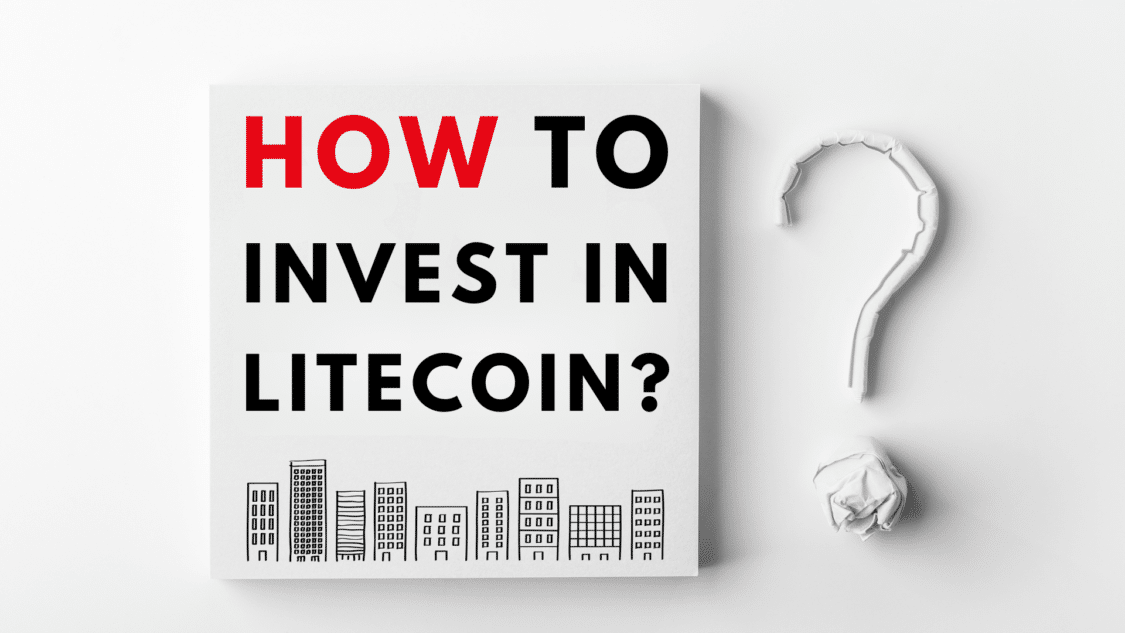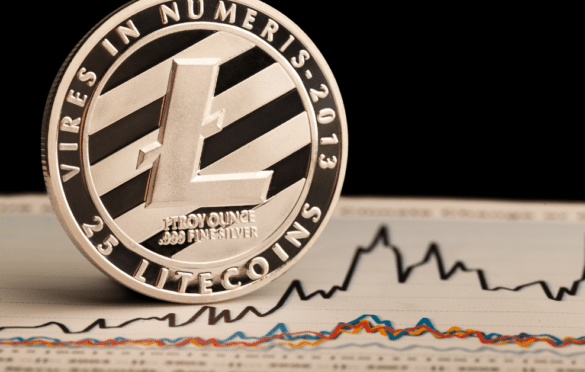Similar to many forms of cryptocurrency, Litecoin is a decentralized peer-to-peer cryptocurrency. It is from a fork in the Bitcoin blockchain. This cryptocurrency enables exchanges with zero-cost payments between people and institutions worldwide. Litecoin and Bitcoin are similar in that they function through a proof-of-work system. Litecoin, however, due to modifications, is a faster version of Bitcoin. The system used on Litecoin to make the process more efficient is a mining algorithm called script.

It produces a new block to mine every 2.5 minutes, while Bitcoin stands at 10 minutes, making Litecoin four times faster. The Litecoin supply is four times as great. While Bitcoin stands at 21 million coins, Litecoin’s overall cap is 84 million.
How does Litecoin work?
It is a decentralized peer-to-peer cryptocurrency operating on a public blockchain. No central authority or institution controls the network, and transactions are verified and recorded by a network of nodes and miners. Transactions on the network involve sending and receiving coins between addresses. Each transaction goes through a network verification process by nodes and miners to ensure its validity and prevent fraud.
Miners use specialized hardware and software and solve intricate math problems. This enables them to add a new block to the blockchain and earn additional Litecoin as a reward. The blockchain is a public ledger with an archive of all transactions on the network. Each block in the chain has a cryptographic hash of the last block, creating an immutable record of all transactions on the network. It uses the Scrypt algorithm, which differs from Bitcoin. Scrypt is a memory-hard algorithm specifically designed to be more resistant to ASIC mining, which can help prevent the centralization of mining power and ensure the network’s security.
The transactions require a small fee, which is used to incentivize miners to include them in the blockchain. Compared to traditional financial transactions, the prices are often significantly lower.
Litecoin operates on a decentralized network that uses cryptography and mining to secure and verify transactions. Its Scrypt algorithm and lower transaction fees make it a useful alternative to Bitcoin and other cryptocurrencies.
The mining process of it is similar to that of Bitcoins and various other blockchain-based cryptocurrencies. Each block of transactions goes through confirmation by miners using high-powered computer hardware that confirms each block and secures it to the blockchain network.
This process involves many calculations hence why this is known as the “proof of work” network. Once a single block is verified, the next block can enter the chain. Generally, transactions that use blockchain technology remain anonymous. Miners who successfully verify a block receive 12.5 Litecoin.

What is Litecoin used for?
The main focus of this cryptocurrency is to function as a medium for transacting payments without using a third party. It was initially designed to be used for cheaper transactions for more efficient everyday use. On the other hand, Bitcoin is often used as a store of value for long-term use.
It is a cryptocurrency created and introduced in 2011 as a fork of Bitcoin. Like Bitcoin, Litecoin is a decentralized, peer-to-peer digital currency that can be adopted for online transactions. It is known to be faster and more efficient than Bitcoin. Transactions on the network are processed four times faster than Bitcoin, with transaction fees being relatively lower. It shares many purposes similar to Bitcoin and other crypto assets, including online payments, investment, trading, and remittances.
It can be used for several purposes, including:
- Online Payments: It can be used to pay for goods and services online. Many online merchants have begun to accept Litecoin as a form of payment.
- Investment: Litecoin can be bought and held as an investment. It comes with the expectation that the currency’s value will rise over time.
- Trading: Litecoin can be traded on crypto exchanges like any other asset. Traders can buy and sell the currency according to its current market value.
- Remittances: Litecoin can transfer money across borders quickly and at a reasonably low price. This can be an advantage to those looking to send money to people abroad.
How to invest in Litecoin?
This cryptocurrency is not available for purchase from many traditional brokers. It needs to be through cryptocurrency exchanges or from an online brokerage firm. To keep your crypto safe, you’ll need to utilize a cryptocurrency wallet, a software program that manages your funds.
Even if you trust the program, you must remember and maintain a password or key to which only you have access. This has been a problem with cryptocurrency since people who forget their passwords lose access to their funds.

To get your cryptocurrency to be secure in your wallet, you need to use a crypto exchange. A crypto exchange is a platform for buying and selling crypto. Although it is theoretically used for faster payments, the fact is that crypto’s development as a universal method of payment and legal trade is still in the early stages.
Here is a step-by-step guide on how to invest in Litecoin:
- Research and Learn: Investing in Litecoin or any asset comes with risks. Understanding what you’re investing in is important before investing your hard-earned money into it. Spend time researching Litecoin’s technology, history, and the potential risks and rewards that come along with it. The assets website gives you access to articles and blogs. Joining cryptocurrency communities and forums can also help you learn more.
- Choose a Wallet: A wallet is where you will store your Litecoin. You can choose from different types of wallets, such as software, hardware, and mobile wallets. Software wallets are apps that can be downloaded to your computer or smartphone. Physical devices, known as hardware wallets, are used to store cryptocurrencies offline. Lastly, mobile wallets are applications that you can download to your smartphone. Choose a reputable wallet provider that is secure and user-friendly and fits your personal needs.
- Choosing an Exchange: An exchange is a platform to buy and sell Litecoin. Some popular exchanges that support Litecoin trading are Binance, Coinbase, Kraken, and Bitfinex. When choosing an exchange, consider the fees they charge, its reputation, the trading pairs they offer, and most importantly, its security measures.
- Buying: Once you’ve set up your wallet and exchange account, you can proceed with buying Litecoin. You must deposit funds into your exchange account using a bank transfer or credit/debit card to buy. Once doing so, navigate to the Litecoin trading page on the exchange and select the trading pair you’re interested in using (for example, LTC/USD). Lastly, enter the amount you want to buy and complete the transaction.
- Monitor: Once you’ve bought it, keeping track of its price and monitoring the investment is critical. As we know, cryptocurrency prices constantly fluctuate, so be aware of any price changes in your investment or the market. Several websites can track the price of it, such as CoinMarketCap, CryptoCompare, or TradingView.
Overall, investing in this cryptocurrency requires doing your own research, choosing a wallet and exchange, buying Litecoin, and monitoring your investment. Remember that cryptocurrency can be risky; you should invest carefully in what you can afford to lose.
Advantages and Disadvantages of Litecoin:
Advantages:
- It is designed to have a faster transaction time than Bitcoin. Blocks are mined every 2.5 minutes compared to Bitcoin’s 10 minutes. For users looking to make quick transactions, this is a great alternative.
- Its transaction fees are seen to be lower than those of Bitcoin. Litecoin is a cost-effective option for sending and receiving funds.
- It has a strong and devoted community of developers and users actively working to improve the network and boost its adoption.
- It was introduced in 2011 and has a relatively long track record compared to many other crypto assets.
- It is a decentralized asset, meaning it is not controlled by any central authority.
Disadvantages:
- Like most crypto assets, it is known for its volatility, making it a risky investment for some.
- While Litecoin has been around for some time, it still has relatively limited adoption compared to more popular cryptocurrencies like Bitcoin.
- It faces competition from other crypto assets that offer similar features, such as Bitcoin Cash and Dash.
- The cryptocurrency industry is still highly unregulated, which can bring uncertainty to many investors.
- It is subject to technical risks such as network attacks, software bugs, and vulnerabilities.
Conclusion
In conclusion, Litecoin is a peer-to-peer cryptocurrency operating on a decentralized network. It provides fast and secure transactions with generally low fees. Its devoted developers and users are dedicated to improving the network and promoting its adoption. While Litecoin faces competition from other cryptocurrencies, it is still a popular and established option for investing in the cryptocurrency industry. As with any investment, it’s essential to consider the risks and rewards before investing in Litecoin or any other cryptocurrency. However, with its unique advantages and track record of success, Litecoin is certainly a cryptocurrency worth investing in for those looking to diversify their investment portfolio.
For more news updates, visit our homepage now and see our latest news article. Want to learn more about trading? Visit our education page now and learn for FREE!

